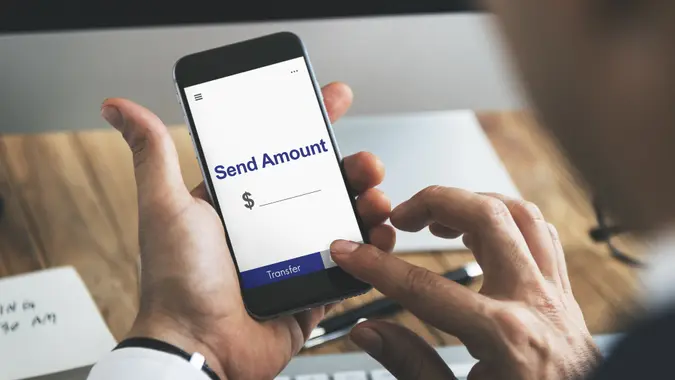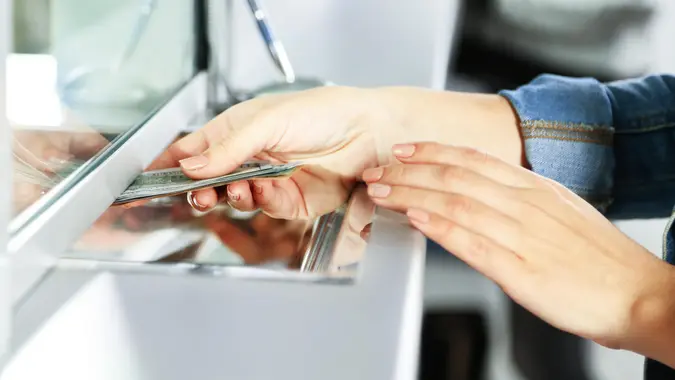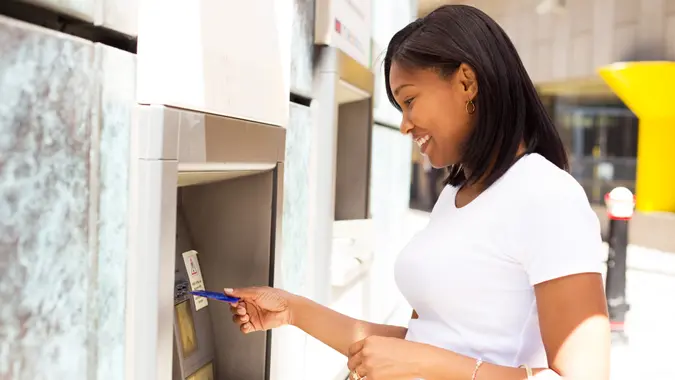How To Find All Bank Accounts in Your Name and Get Your Money

Commitment to Our Readers
GOBankingRates' editorial team is committed to bringing you unbiased reviews and information. We use data-driven methodologies to evaluate financial products and services - our reviews and ratings are not influenced by advertisers. You can read more about our editorial guidelines and our products and services review methodology.

20 Years
Helping You Live Richer

Reviewed
by Experts

Trusted by
Millions of Readers
It’s not uncommon to lose track of your bank accounts, especially when moving through life’s various stages, such as changing jobs, relocating, or inheriting assets.
Whether it’s a forgotten savings account from childhood or an overlooked account set up for automatic bill payments, it’s important to locate these assets. Here are the steps to identify all bank accounts in your name.
Begin With a Thorough Search
Start by combing through your old and current financial documents, both paper-based and digital. Look for bank statements, account opening letters, or any communication from financial institutions. Often, these documents can provide evidence of existing accounts.
Utilize Online Banking and Financial Management Tools
Review the accounts listed if you use online banking or financial management apps. Some apps aggregate information from multiple financial institutions, which can help identify accounts you may have overlooked.
Contact Previous Employers
If you’ve had jobs that offered direct deposit, contact the human resources departments. They may have records of the bank accounts into which your salary was deposited, especially if you didn’t close those accounts after leaving the job.
Leverage Government and Non-Profit Resources
Governments often hold funds from inactive or unclaimed accounts in their unclaimed property divisions. In the United States, the National Association of Unclaimed Property Administrators (NAUPA) offers a centralized database where you can search for unclaimed assets in your name across multiple states.
The FDIC and NCUA
For accounts in closed institutions, the Federal Deposit Insurance Corporation (FDIC) for banks and the National Credit Union Administration (NCUA) for credit unions offer search tools to find and claim funds from these accounts. This safety net ensures that even in the event of a bank or credit union failure, individuals can recover their deposits up to the insured limit.
Engage With Banks Directly
If you have a rough idea of where you might have opened accounts, visit or contact these banks directly. Be prepared to provide identification and any known account details. If you’re unsure, it’s worth inquiring at major banks and credit unions in areas where you’ve lived or worked.
Use Social Security Number Services
Some banks offer services to find accounts using your Social Security Number, especially if you believe there might be accounts you’re not aware of. This service may require a formal request and proof of identity.
Claiming Your Money
Once you’ve identified any bank accounts in your name, the next step is to access your funds. This process will vary depending on the bank’s policies and the account’s status. For active accounts, simply proving your identity may suffice. For dormant or unclaimed accounts, you might need to undergo a rigorous verification process, including providing historical account information, proof of address, or answering security questions.
In cases where accounts have been transferred to a government unclaimed property office, follow the claim process outlined on their website. This often involves filling out claim forms, providing a notarized claim, and submitting identification documents.
Bottom Line
Finding and accessing all bank accounts in your name requires diligence, patience, and sometimes a bit of detective work. By systematically searching through personal records, leveraging online tools, and engaging directly with banks and government agencies, you can uncover and reclaim what’s rightfully yours.
Editor's note: This article was produced via automated technology and then fine-tuned and verified for accuracy by a member of GOBankingRates' editorial team.
 Written by
Written by 

























